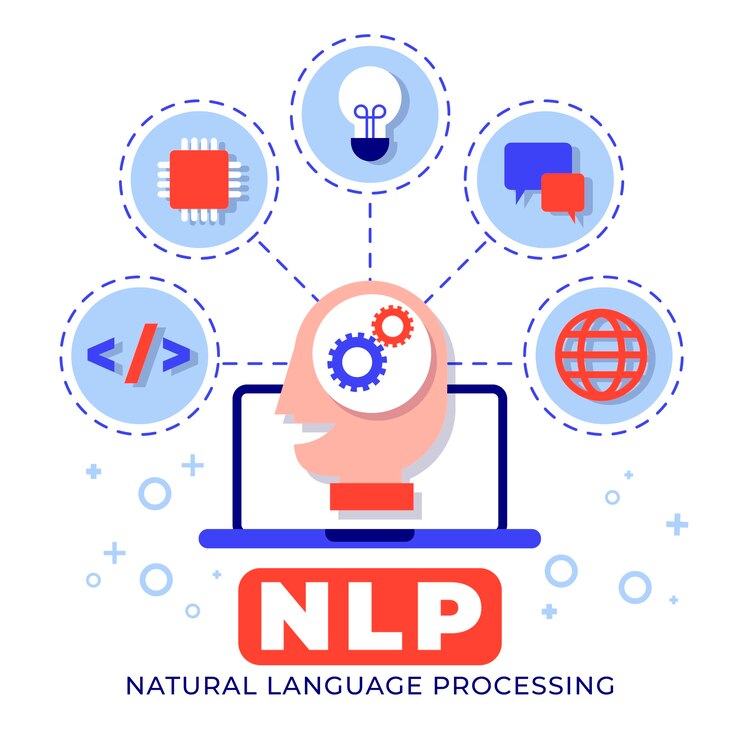The autocorrector on our phones is a commonplace illustration of natural language processing. This technology examines the words we enter when we send a text message and makes suggestions for spelling and grammar improvements. Despite its apparent simplicity, this procedure involves morphological, syntactic, and semantic analysis of language and is a sophisticated application of natural language processing.
Computers can comprehend and process human language thanks to natural language processing (NLP), a subfield of artificial intelligence (AI) or nlpai. It essentially bridges the gap between the language that humans use and the language that robots can understand by acting as a translator.
WHAT IS THE PROCESS OF NATURAL LANGUAGE PROCESSING AI?
NLP employs a wide range of methods to give computers the same comprehension of natural language as people. Natural language processing uses artificial intelligence (AI) to take data from the actual world, process it, and interpret it in a way that a computer can comprehend, regardless of whether the language is written or spoken.
Computers have microphones to record audio and programs to read, just as people have many senses, such as ears to hear and eyes to see. Additionally, computers have programs to process their own inputs, much as people have brains to process information. The input is transformed into computer-understandable code at some stage of processing.
WHAT IS THE SIGNIFICANCE OF NATURAL LANGUAGE PROCESSING AI?
Large volumes of unstructured, text-heavy data are used by businesses, and they require an efficient method of processing it.
Natural human language makes up a large portion of the data generated online and kept in databases, and until recently, organizations were unable to examine this data efficiently. Natural language processing can be helpful in this situation.
The following two sentences demonstrate the benefits of natural language processing: “Cloud computing insurance should be part of every service-level agreement” and “A good SLA ensures an easier night’s sleep—even in the cloud.” The program will identify that cloud computing is an entity, that cloud is a condensed form of cloud computing, and that SLA is an acronym if a user uses natural language processing for search.
Historically, machine learning algorithms have struggled to interpret these kinds of ambiguous features, which are common in human language. Algorithms can now interpret them efficiently thanks to advancements in machine learning and deep learning techniques. The scope and depth of data that can be examined are increased by these advancements.
The same factors that make interacting with an AI voice assistant or generative AI chatbot beneficial also apply to natural language processing. A person may communicate with a voice assistant, such as Siri, on their phone using their normal speech, and the voice assistant would still be able to understand them, rather than requiring them to use a certain specified language.
WHAT IS THE PURPOSE OF NATURAL LANGUAGE PROCESSING?
The following are a few of the primary jobs and NLP operations carried out by natural language processing algorithms:
Text categorization. Texts are given tags by this function so they can be categorized. Sentiment analysis, which aids the natural language processing algorithm in identifying the sentiment, or emotion, underlying a text, may benefit from this. For instance, the algorithm can identify the proportion of good and negative references to brand A when it appears in X letters.
Additionally, it can aid with intent recognition, which makes predictions about the speaker’s or writer’s actions based on the text they are creating.
Extraction of text. This feature automatically extracts key information from text and summarizes it. Keyword extraction, which extracts the most crucial terms from the text and might be helpful for search engine optimization, is one example of this. Natural language processing isn’t entirely automated; it needs some programming to accomplish this.
Nonetheless, there are numerous straightforward keyword extraction applications available that automate the majority of the procedure; the user only needs to adjust the program’s parameters. A tool might, for instance, highlight the words that appear most frequently in the text.
Entity recognition, which takes names of people, locations, and other entities out of text, is another example.
Translation by machine. Without the need for human assistance, a computer converts text from one language—like English—to another—like French.
Natural language production. This procedure analyzes unstructured data using natural language processing algorithms, then automatically generates content from the data. Language models that can evaluate unstructured text and produce credible articles based on it, such as the third-generation generative pre-trained transformer (GPT-3), are one example of this.
BOTTOM LINE
A key component of technology and how people use it is natural language processing ai. Despite its difficulties, NLP ai is anticipated to improve in accuracy with increasingly complex models, accessibility, and relevance across a wide range of businesses. NLP will remain a crucial component of daily life and business.
Did you like our blogs associated with natural language processing AI? If not, you can leave a comment for us; we loved to pay attention. Feel free to share on Twitter or Facebook by way of using the remarkable-clean share buttons on the right!


